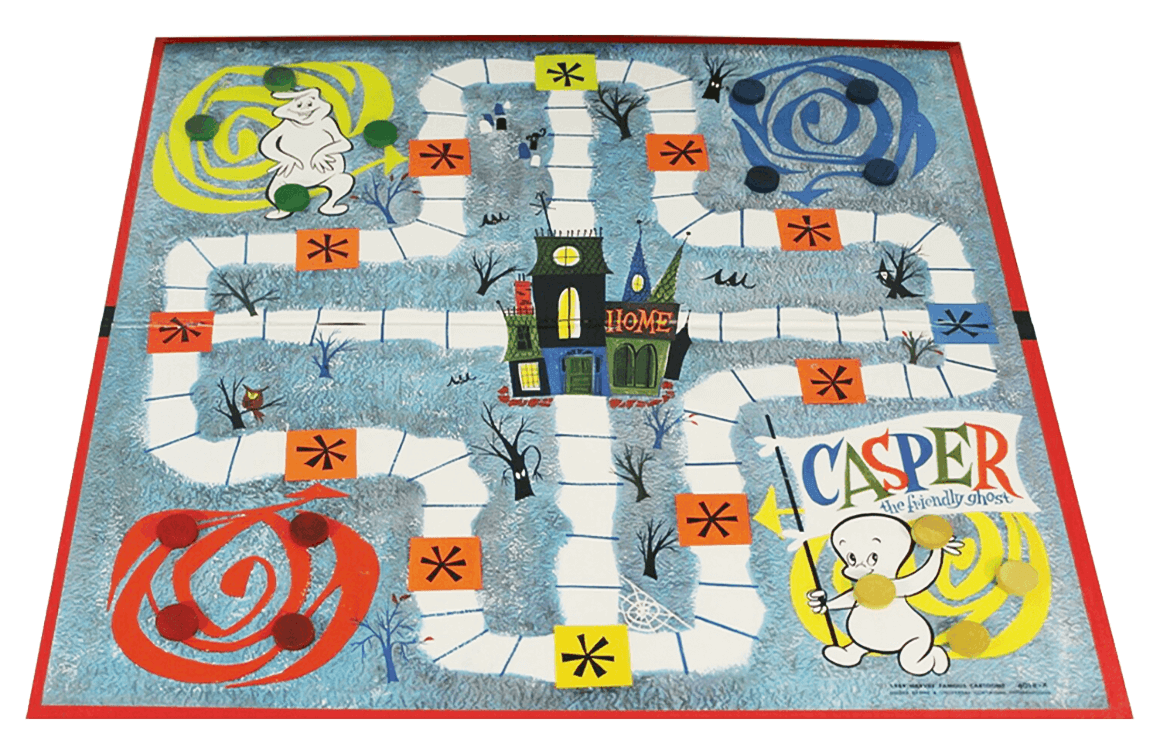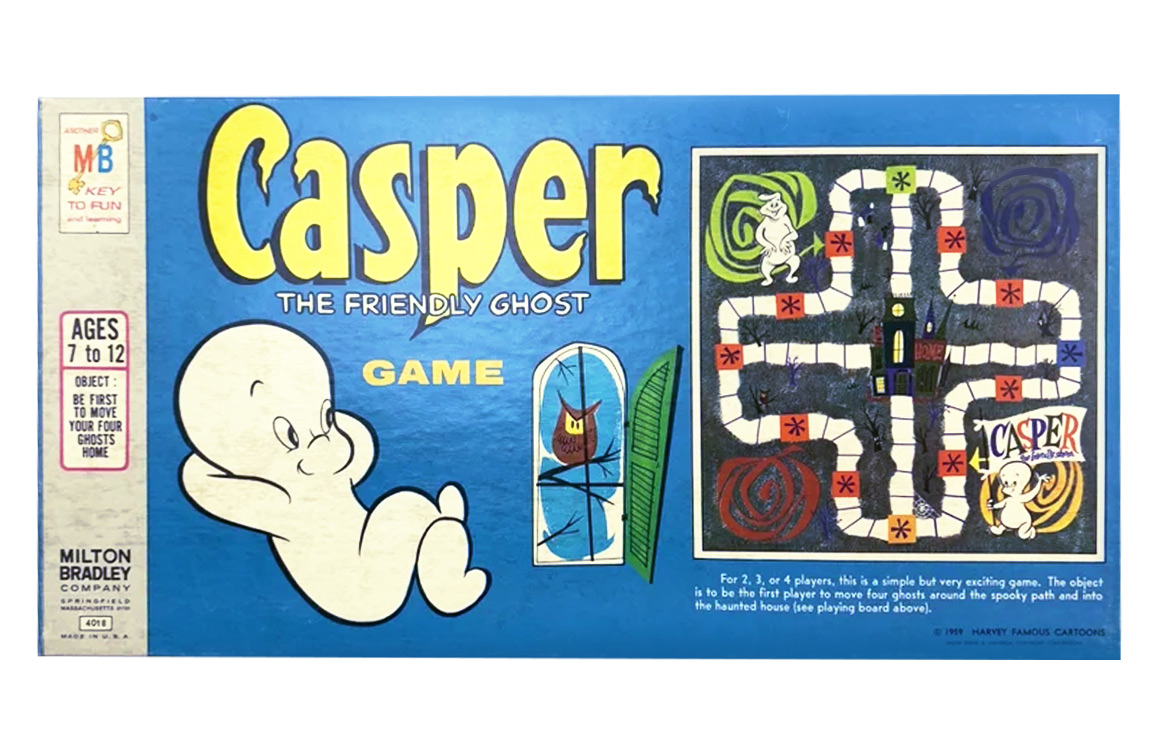“…a simple but very exciting game.”
Released in 1959 by Milton Bradley, Casper the Friendly Ghost Game sent players on a journey down a spooky path and into a haunted house.
The board game was based on the amiable child spectre created by Seymour Reit and Joe Oriolo in the late 1930s. Casper has appeared in animated shorts, comics, feature films, video games, and other forms of entertainment media.
GAMEPLAY
The goal of the game was to be the first player to move all 4 of one’s ghosts (pawns) down the path and home into the haunted house.
Players selected a pawn colour and set all 4 pawns on a dedicated “ghostly circle” space on the board. The high spin on the dial took the first turn.
A bit of math was involved with each spin. The spinner was divided into 6 segments coloured in alternating red, yellow, and blue. Within each segment was a small string of numbers marked 1 through 6 on the outer circle plus 1 large number (1, 2, 3, 4, 5, or 6) in the inner circle. During a regular spin, the two numbers within each segment were added to determine how many spaces a player could move.
Spins were trickier at the start of the game. Players needed to score a sum of 5 to exit their “ghostly circle” starting position and enter the game. Players lucky enough to spin doubles (the spinner pointing to the same number in both the outer and inner circles) could move 2 pawns onto the board.
The game proceeded clockwise with players taking turns spinning the dial and moving their pawns along the path. Special stops along the board allowed players to capture opponents and return them to their starting points, temporarily blocked players from moving forward on the board, or offered safety from capture.
Once a player had made their way around the board and landed on the space in front of them that corresponded to their pawn colour, they could move directly up the path towards the haunted house.
The first player to move all 4 of their pawns into the haunted house won the game.
IN THE BOX
A complete game included the bi-fold game board, spinner, and player pawns (4 each in red, blue, yellow, and green). Instructions were printed on a cardboard insert inside the box that also held the spinner.
Note: If you buy something using the eBay link in this story, we may earn a small commission. Thank you for supporting independent toy journalism!


